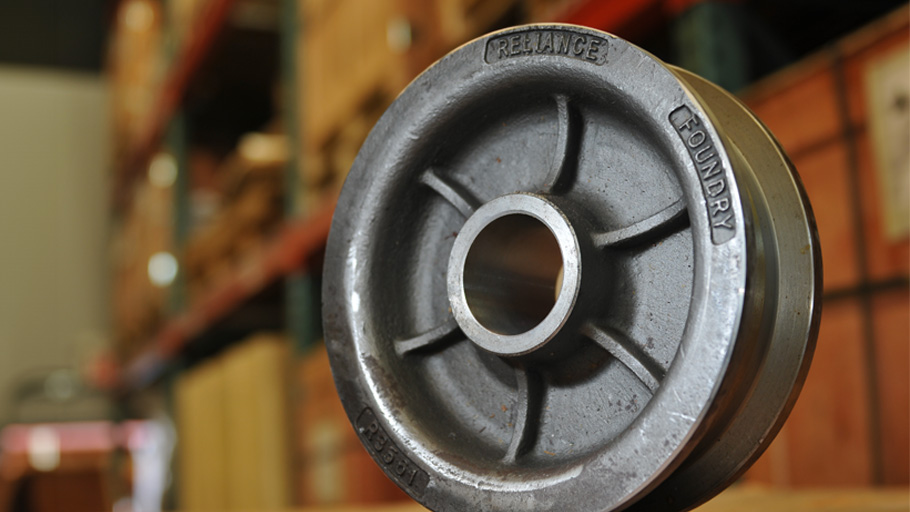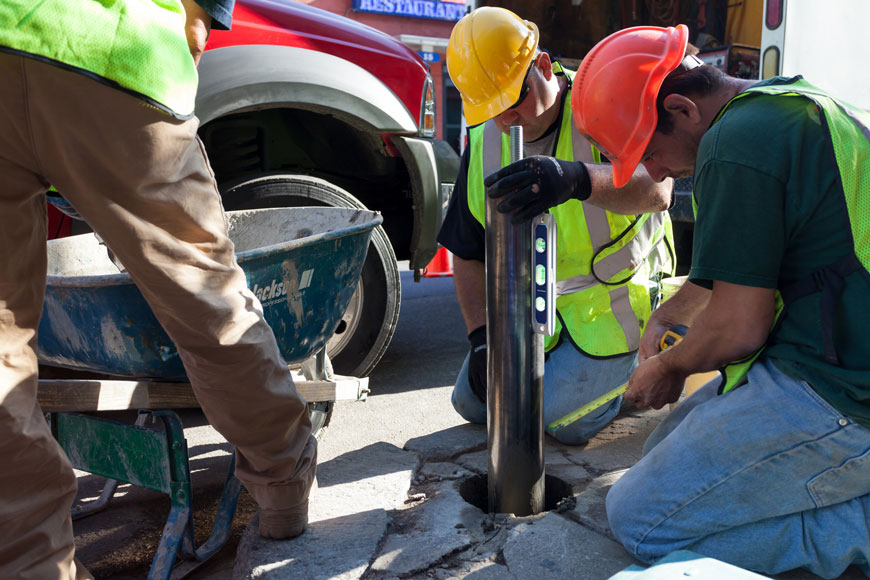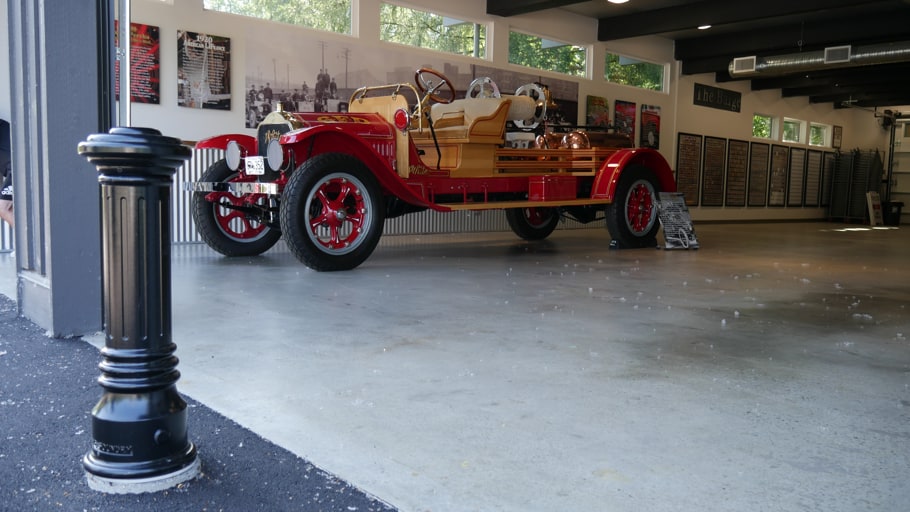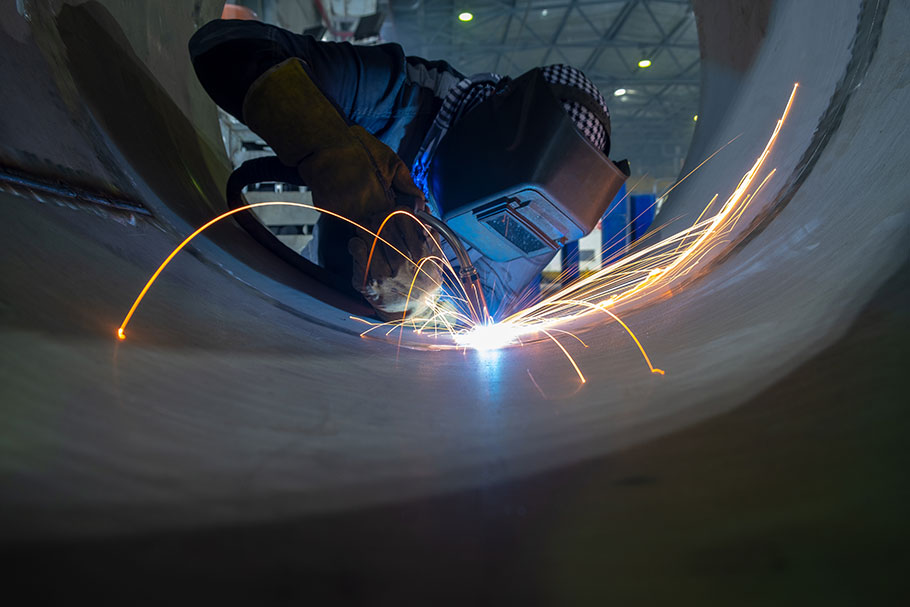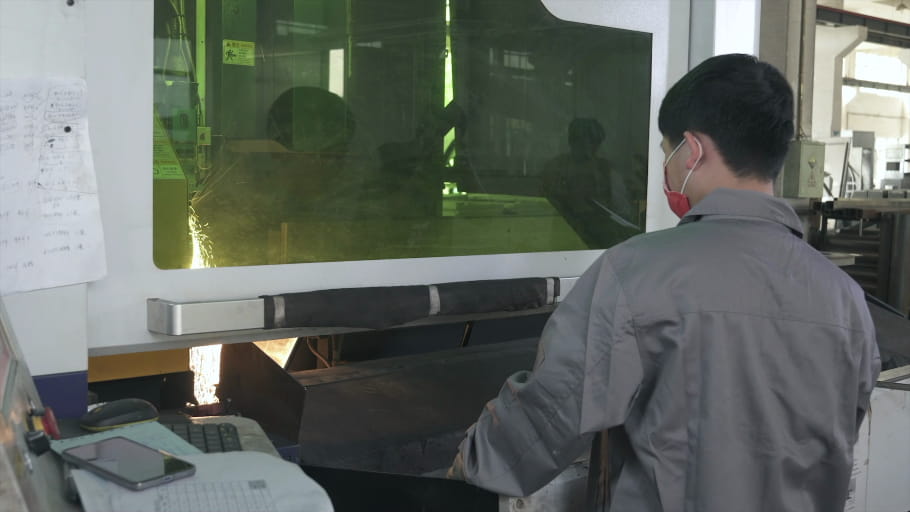Welding cast iron in house is possible—under certain conditions
Effective in-house welding of cast iron parts can save time and money—but there are challenges. Welding failure can often result in cracking or other damage. If critical parts are involved, it may be wise to seek the workmanship of a welding facility with experienced welders to ensure a successful result.
If welding is performed in-house, it is crucial to research the steps required to effectively produce a welded part. Four key steps should be taken before getting started:
- Identify the alloy
- Clean the casting thoroughly
- Select a pre-heat temperature
- Select an appropriate welding technique
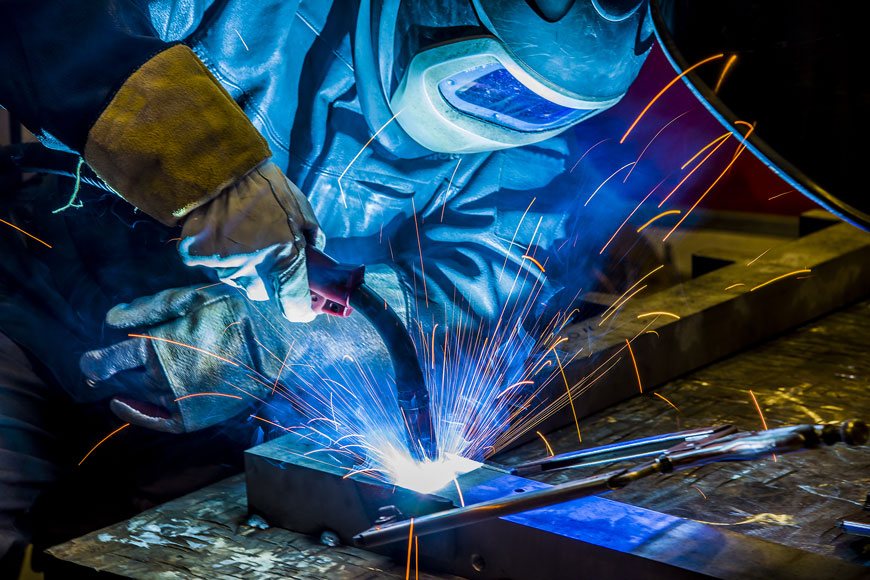
Identify the alloy
Cast irons are a family of iron-carbon alloys. Their high carbon content (usually 2–4%) gives cast iron its characteristic hardness. However, that hardness comes at the expense of ductility. It is less malleable in comparison to steel or wrought iron. The heating and cooling cycles during welding cause expansion and contraction in the metal, inducing tensile stress. Cast irons do not stretch or deform when heated or stressed—instead, they crack—making them extremely difficult to weld. This characteristic can be improved by adding different alloys.
Some cast iron alloys are easier to weld than others:
- Grey cast iron
Grey cast iron is the most common form of cast iron. Carbon precipitates out into graphite flakes during manufacturing into either a pearlite or ferrite crystalline microstructure. It is more ductile and weldable than white cast iron. However, it still poses a challenge to prospective welders as the graphite flakes within grey cast iron can enter the weld pool to cause weld metal embrittlement.
- White cast iron
White cast iron retains the carbon as iron carbide without precipitating it out as graphite. The cementite crystalline microstructure is very hard and brittle. White cast iron is generally considered unweldable. - Ductile, nodular, or malleable iron
These cast irons are all less brittle due to microstructural differences due to manufacture. All three have spheroidal carbon microstructures created by their unique manufacturing processes.
The best way to determine whether you have white or grey iron is to check the original specification. Spectrochemical analysis can provide this specification after the fact. When these precise ways are not possible, there are a few ways to check in the shop.
Grey iron will show grey along a fracture point, due the the graphite in its microstructure. White iron is whiter along a fracture due to the cementite. Unfortunately, the fracture test is only useful if the welder knows that the material is either grey or white. These are older, more traditional forms of cast iron. They are also more common in certain classes of goods. However, ductile iron, a relative newcomer, is also quite white along fracture, and is much more weldable.
Spark testing can also be used by an experienced metallurgist to try to determine type of iron.
Clean the casting
Regardless of the alloy, all castings must be properly prepared prior to welding. While preparing the casting for welding, it is crucial to remove all surface materials. The casting must be completely clean in the area of the weld. Remove paint, grease, oil, and other foreign material from the weld zone. It is best to apply heat carefully and slowly to the weld area for a short time to remove entrapped gas from the weld zone of the base metal.
A simple technique for testing the readiness of the cast iron surface is to deposit a weld pass on the metal—it will be porous if any impurities are present. This pass can be grinded off, and the process repeated a few times until the porosity disappears.
Pre-heat
All cast irons are vulnerable to cracking under stress. Heat control is the single most important factor in avoiding cracks.
A cast iron weld requires three steps:
- Pre-heating
- Low heat input
- Slow cooling
The primary reason for heat control is thermal expansion. When metal warms, it expands. No stress is caused when an entire object warms and expands at the same rate, but stress will build when heat is localized in a small heat-affected zone (HZ).
Localized heating causes restricted expansion—the HZ is contained by the cooler metal around it. The degree of resulting stress depends on the thermal gradient between the HZ and the casting body. In steel and other ductile metals, stress built by restricted expansion and contraction is relieved by stretching. Unfortunately, this can cause cracking during the contraction period since cast irons have relatively poor ductility. Pre-heating decreases the thermal gradient between the casting body and the HZ, thereby minimizing the tensile stress caused by welding. In general, higher temperature welding methods require a higher temperature pre-heat. When adequate preheating is not possible, the best strategy is to minimize heat input—select a low temperature welding process, and low melting point welding rods or wires.
Cooling rate is another factor that has a direct impact on the stresses induced at the weld. Rapid cooling causes contraction, which creates brittle, easily cracked welds. Contrastingly, low cooling reduces hardening and contraction stress.
Pre-heating before welding
All cast irons are vulnerable to cracking under stress, but this can be prevented with pre-heating. Watch the video to see how heat is applied to metal before welding.
Welding technique
Welding techniques should be chosen based on their suitability to the cast iron alloy being welded. The most common welding processes are stick, oxy acetylene, and braze welding.
Stick welding
Stick welding, also known as shielded metal arc welding or MMA, makes use of a consumable electrode covered with a flux. Different types of electrode can be used depending on the application, the color match required, and the amount of machining to be done after welding.
There are three main filler types that work well for cast iron stick welding:
- Cast iron covered electrodes
- Copper alloy electrodes
- Nickel alloy electrodes
Nickel alloy electrodes are the most popular for cast iron welding. According to New Hampshire Materials Laboratory Inc., nickel-iron weld is stronger with a lower coefficient of thermal expansion, reducing welding stresses and improving resistance to cracking.
An electric arc between the electrode and welding area melts the metals and causes fusion. The arc should be directed at the weld pool, rather than at the base metal, as this will minimize dilution. It is recommended to use the lowest current setting approved by the manufacturer to minimize heat stress. Preheat pieces to at least 250°F prior to welds with cast iron or copper electrodes. Nickel electrodes can be used without a preheat.
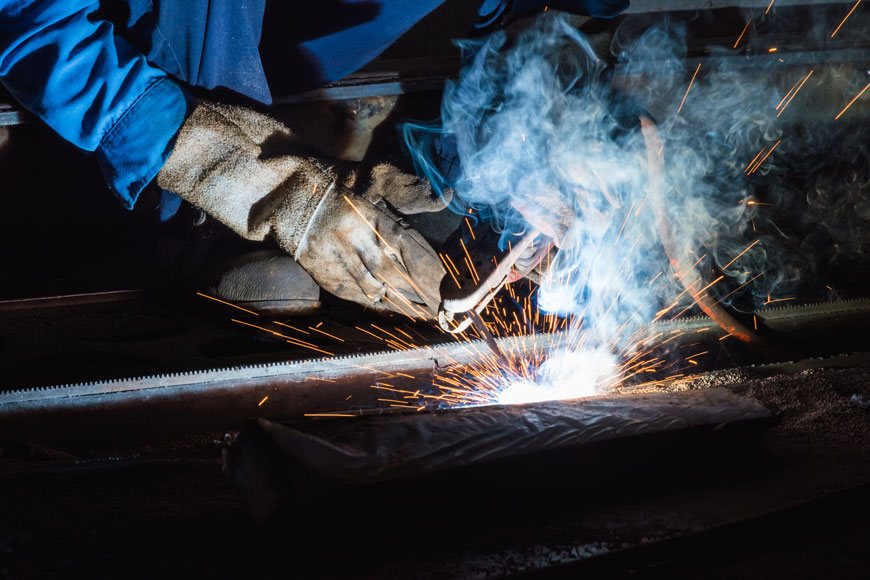
Oxy acetylene welding
Oxy acetylene welding also makes use of electrodes, but instead of an arc generated by current, an oxy acetylene torch provides the energy for welding. Cast iron electrodes, and copper zinc electrodes, are both suitable for oxy acetylene welding of cast iron.
Care must be taken not to oxidise the cast iron during acetylene welding, as this causes silicon loss and the formation of white iron in the weld. The welding rod should be melted in the molten weld pool, rather than directly by the flame, to minimize temperature gradients.
Braze welding
Braze welding is a common method for joining cast iron parts due to the minimal impact on the base metal itself. A welding rod provides the filler that adheres to the cast iron surface. Because of the lower melting point of the filler compared to the cast iron, the filler does not dilute with the cast iron but adheres to the surface.
Cleanliness of the surface is critical for this weld technique since the join is dependent on the quality of the filler wetting the surface of the base metal. According to Machine Design, using flux to prevent the formation of oxides during brazing is common. It is a liquid that promotes wetting, which lets the filler flow over the metal parts to be joined. It also cleans the parts of oxides so that the filler bonds more tightly to the metal parts. In addition, fluxes are used in welding to clean the metal surfaces.
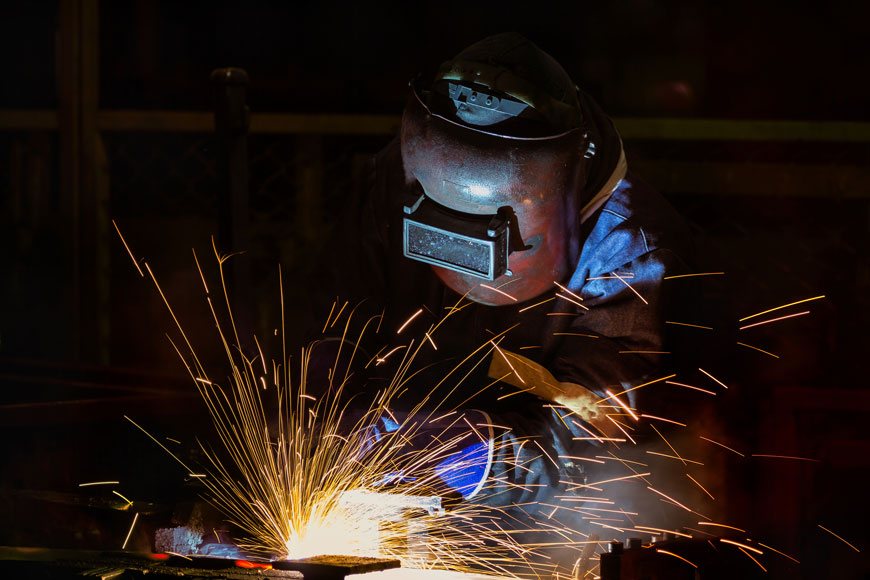
Finishing
Cracking usually occurs during the thermal contraction phase—tensile stress builds as the weld cools and contracts. If the stress reaches a critical point, the weld cracks.
The chances of cracking can be decreased by applying a compressive stress to oppose tensile stress during cooling. Welders use a technique called peening (moderate strikes with a ball-peen hammer) to a deformable weld bead while the weld is still soft. Peening decreases the risk of cracking in the weld and HZ, but should only be attempted when working with relatively ductile weld metal.
The final step of the weld is cooling control. This process uses insulating materials to slow cooling as much as possible, or applies periodic heat to the weld to slow down the natural cooling process.
In-house welding
While contracting cast iron welding to a professional can guarantee a quality weld, it is possible to complete a weld-repair in-house with careful preparation. Follow the steps of identifying your alloy, preparing the material, and choosing the most appropriate weld technique.
Sources
- Total Materia. “Welding Cast Iron and other Irons.”
- New Hampshire Materials Laboratory. “Tips on Welding Cast Iron.”
- The Welding Institute. “Weldability of Materials: Cast Irons.”


